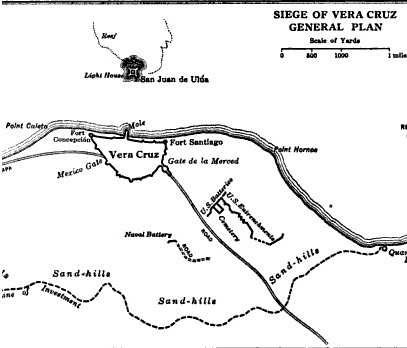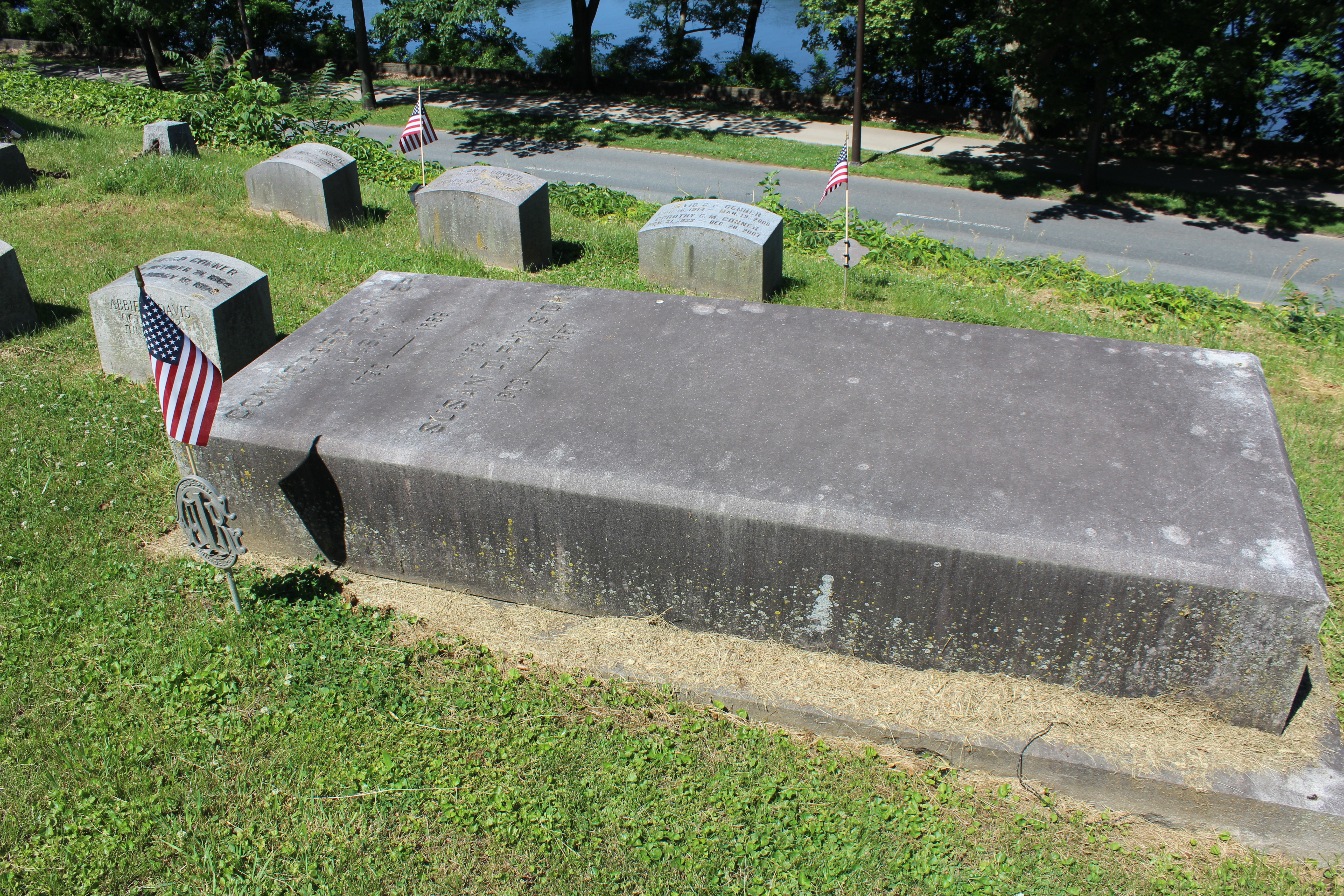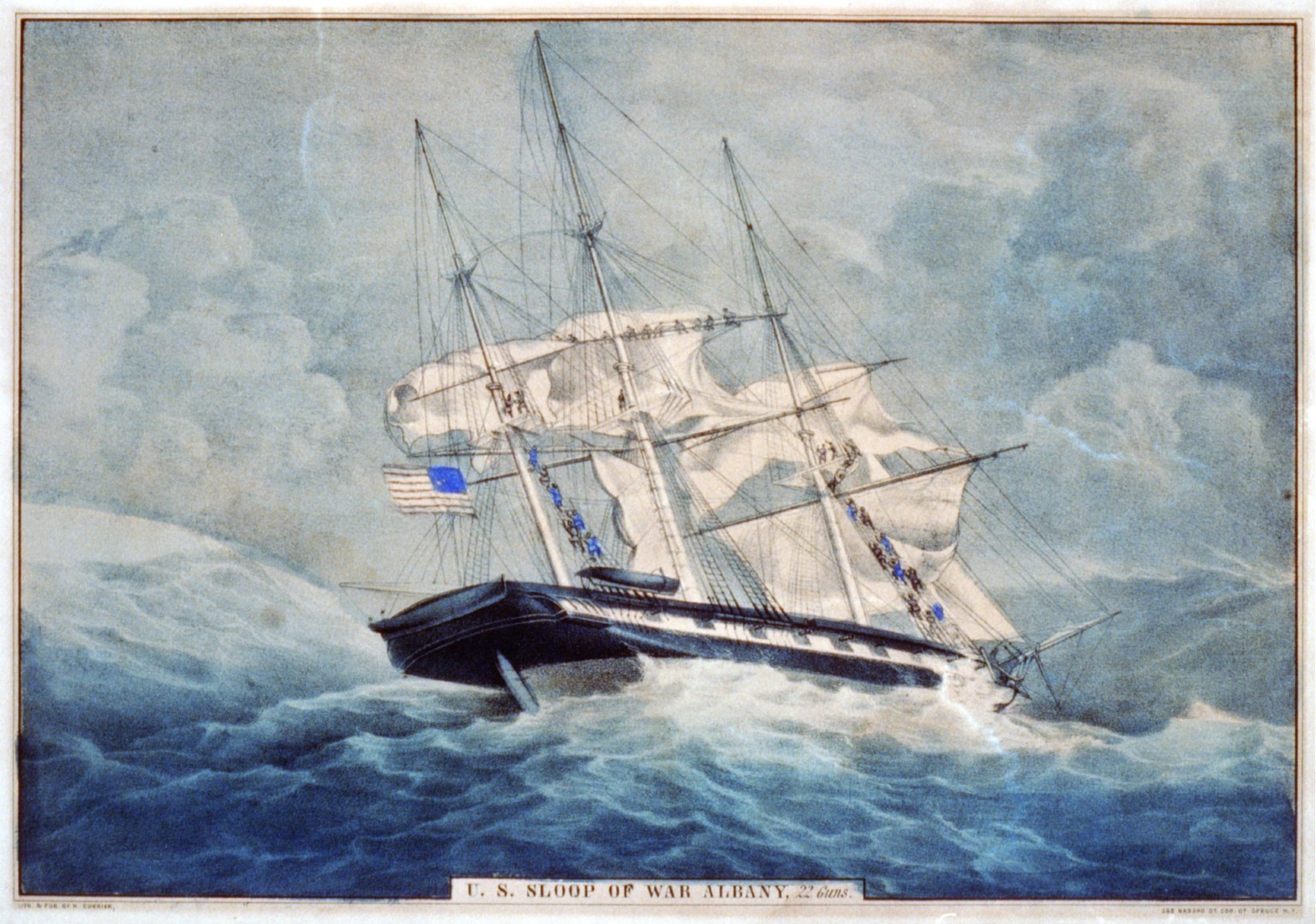|
USS Cumberland (1842)
The first USS ''Cumberland'' was a 50-gun sailing frigate of the United States Navy. She was the first ship sunk by the ironclad CSS ''Virginia''. ''Cumberland'' began in the pages of a Congressional Act. Congress passed in 1816 "An act for the gradual increase of the Navy of the United States." The act called for the U.S. to build several ships-of-the-line and several new frigates, of which ''Cumberland'' was to be one. Money issues, however, prevented ''Cumberland'' from being finished in a timely manner. It was not until Secretary of the Navy Abel Parker Upshur came to office that the ship was finished. A war scare with Britain led Upshur to order the completion of several wooden sailing ships and for the construction of new steam powered ships. Designed by famed American designer William Doughty, ''Cumberland'' was one a series of frigates in a class called the ''Raritan''-class. The design borrowed heavily from older American frigate designs such as ''Constitution'' an ... [...More Info...] [...Related Items...] OR: [Wikipedia] [Google] [Baidu] |
Carronade
A carronade is a short, smoothbore, cast-iron Cast iron is a class of iron–carbon alloys with a carbon content more than 2%. Its usefulness derives from its relatively low melting temperature. The alloy constituents affect its color when fractured: white cast iron has carbide impuriti ... cannon which was used by the Royal Navy. It was first produced by the Carron Company, an ironworks in Falkirk, Scotland, and was used from the mid-18th century to the mid-19th century. Its main function was to serve as a powerful, short-range, anti-ship and anti-crew weapon. The technology behind the carronade was greater dimensional precision, with the shot fitting more closely in the barrel thus transmitting more of the propellant charge's energy to the projectile, allowing a lighter gun using less gunpowder to be effective. Carronades were initially found to be very successful, but they eventually disappeared as naval artillery advanced, with the introduction of rifling and consequen ... [...More Info...] [...Related Items...] OR: [Wikipedia] [Google] [Baidu] |
Commodore (United States)
Commodore was an early title and later a rank in the United States Navy, United States Coast Guard and the Confederate States Navy, and also has been a rank in the United States Public Health Service Commissioned Corps and the National Oceanic and Atmospheric Administration Commissioned Officer Corps (NOAA Corps) and its ancestor organizations. For over two centuries, the designation has been given varying levels of authority and formality. Today, it is no longer a specific rank within active-duty or reserve forces or in the Public Health Service Commissioned Corps or NOAA Corps, but it remains in use as an ''honorary title'' within the U.S. Navy and U.S. Coast Guard for those senior captains (pay grade O-6) in command of operational organizations composed of multiple independent subordinate naval units (e.g., multiple independent ships or aviation squadrons). However, "commodore" is a rank that is actively used to this day in the United States Coast Guard Auxiliary, th ... [...More Info...] [...Related Items...] OR: [Wikipedia] [Google] [Baidu] |
Matthew C
Matthew may refer to: * Matthew (given name) * Matthew (surname) * ''Matthew'' (ship), the replica of the ship sailed by John Cabot in 1497 * ''Matthew'' (album), a 2000 album by rapper Kool Keith * Matthew (elm cultivar), a cultivar of the Chinese Elm ''Ulmus parvifolia'' Christianity * Matthew the Apostle, one of the apostles of Jesus * Gospel of Matthew, a book of the Bible See also * Matt (given name), the diminutive form of Matthew * Mathew, alternative spelling of Matthew * Matthews (other) Matthews may refer to: People * Matthews (surname) Places * Matthews Island, Antarctica * Matthews Range, Kenya * Mount Matthews, New Zealand United States * Matthews, Georgia * Matthews, Indiana * Matthews, Maryland * Matthews, Missouri ... * Matthew effect * Tropical Storm Matthew (other) {{disambiguation ... [...More Info...] [...Related Items...] OR: [Wikipedia] [Google] [Baidu] |
Siege Of Veracruz
The Battle of Veracruz was a 20-day siege of the key Mexican beachhead seaport of Veracruz during the Mexican–American War. Lasting from March 9–29, 1847, it began with the first large-scale amphibious assault conducted by United States military forces, and ended with the surrender and occupation of the city. U.S. forces then marched inland to Mexico City. Background After the battles of Monterrey and Buena Vista, much of Zachary Taylor's Army of Occupation was transferred to the command of Major General Winfield Scott in support of the upcoming campaign. That campaign, determined by Scott and other Washington officials, would be a Veracruz landing and an advance inland.Bauer, K.J., 1974, ''The Mexican War, 1846–1848'', New York: Macmillan, Mexican military intelligence knew in advance of U.S. plans to attack Veracruz, but internal government turmoil left them powerless to send crucial reinforcements before the American assault commenced. Opposing forces Mexican de ... [...More Info...] [...Related Items...] OR: [Wikipedia] [Google] [Baidu] |
USS Raritan (1843)
The first USS ''Raritan'' was a wooden-hulled, three-masted sailing frigate of the United States Navy built at the Philadelphia Navy Yard, laid down in 1820, but not launched until 13 June 1843, sponsored by Commodore Frederick Engle. She was one of the last sailing frigates of the United States Navy.'The History of the American Sailing Navy' (1949), pp. 456–458 On 20 February 1844 the frigate, commanded by Captain Francis H. Gregory, cleared New York Harbor and sailed for the South Atlantic where she served as Commodore Daniel Turner's flagship until she returned to the United States in November 1845. Based at Pensacola, Florida, ''Raritan'' then operated with the Home Squadron as it blockaded the east coast of Mexico and supported Army forces during the war with Mexico. As Commodore David Conner's flagship, she joined USS ''Potomac'' in landing 500 men at Point Isabel to reinforce that military depot in May 1846. During 1847, she participated in the landings at Veracr ... [...More Info...] [...Related Items...] OR: [Wikipedia] [Google] [Baidu] |
John Ancrum Winslow
John Ancrum Winslow (19 November 1811 – 29 September 1873) was an officer in the United States Navy during the Mexican–American War and the American Civil War. He was in command of the steam sloop of war during her historic 1864 action off Cherbourg, France, with the Confederate sea raider . Early life and career Although born in Wilmington, North Carolina, Winslow was a member of the old New England Winslow family, a descendant of ''Mayflower'' passenger Mary Chilton and her husband John Winslow, who was a brother of Pilgrim father Edward Winslow. One of his first cousins was Francis Winslow (I) (1818–1862), who also joined the Navy, becoming a Commander, who also fought in the Civil War and who died of yellow fever in 1862 while in command of the . Winslow's descendants included grandson Eben Eveleth Winslow, a U.S. Army brigadier general. John Winslow was educated in the North and became an ardent abolitionist. He entered the Navy as a midshipman on 1 February 1827, ... [...More Info...] [...Related Items...] OR: [Wikipedia] [Google] [Baidu] |
Raphael Semmes
Raphael Semmes ( ; September 27, 1809 – August 30, 1877) was an officer in the Confederate Navy during the American Civil War. Until then, he had been a serving officer in the US Navy from 1826 to 1860. During the American Civil War, Semmes was captain of the cruiser , the most successful commerce raider in maritime history, taking 65 prizes. Late in the war, he was promoted to rear admiral and also acted briefly as a brigadier general in the Confederate States Army. His appointment or arrangement to act as a temporary brigadier general from April 5 to April 26, 1865, was never submitted to or officially confirmed by the Confederate Senate. Early life and education Semmes was born in Charles County, Maryland, on Tayloe's Neck, a cousin of future Confederate general Paul Jones Semmes and of future Union Navy Captain Alexander Alderman Semmes. He graduated from Charlotte Hall Military Academy and entered the U.S. Navy as a midshipman in 1826. Semmes first served on the ''Lex ... [...More Info...] [...Related Items...] OR: [Wikipedia] [Google] [Baidu] |
French Forrest
French Forrest (1796 – December 22, 1866) was an American naval officer who served first in the United States Navy and later the Confederate States Navy. His combat experience prior to the American Civil War included service in the War of 1812 and the Mexican–American War. Biography Born in Helen, Maryland, he became a midshipman on June 9, 1811 and participated in the War of 1812. He fought with Commodore Oliver Perry at the Battle of Lake Erie and was present in the action between the USS ''Hornet'' and HMS ''Peacock'' on February 24, 1813. He became a lieutenant on March 5, 1817, a commander on February 9, 1837, and a captain March 30, 1844. He was adjutant general in the Mexican–American War, and in 1847, he commanded the American naval forces in the landing at Veracruz, Mexico. When Virginia seceded from the United States on April 17, 1861, Forrest was made its first and only flag officer in the Virginia Navy and assumed command of the Gosport Shipyard (Norf ... [...More Info...] [...Related Items...] OR: [Wikipedia] [Google] [Baidu] |
David Conner (naval Officer)
Commodore David Conner (1792 – 20 March 1856) was an officer of the United States Navy. He served in the War of 1812 and led the Home Squadron during the Mexican–American War. He led the successful naval assault during the siege of Veracruz which included the landing of 10,000 U.S. troops, the largest U.S. military amphibious assault at the time. He served on the Board of Navy Commissioners; as the first Chief of the Bureau of Construction, Equipment, and Repair; as a Special Diplomatic Agent to Mexico and commanded the Philadelphia Naval Yard. Early life Conner was born in Harrisburg, Pennsylvania. He was the son of David Conner, an Irishman and Abigail Rhodes, who was of English descent. He worked in Philadelphia and then joined the U.S. Navy on 16 January 1809. He served his first few years as a midshipman on the frigate . Military career During the War of 1812 Conner served in during her chase of HMS ''Belvidera'' and her actions with in February 1813 and the Marc ... [...More Info...] [...Related Items...] OR: [Wikipedia] [Google] [Baidu] |
Mexican–American War
The Mexican–American War, also known in the United States as the Mexican War and in Mexico as the (''United States intervention in Mexico''), was an armed conflict between the United States and Mexico from 1846 to 1848. It followed the 1845 American annexation of Texas, which Mexico still considered its territory. Mexico refused to recognize the Velasco treaty, because it was signed by President Antonio López de Santa Anna while he was captured by the Texan Army during the 1836 Texas Revolution. The Republic of Texas was ''de facto'' an independent country, but most of its Anglo-American citizens wanted to be annexed by the United States. Sectional politics over slavery in the United States were preventing annexation because Texas would have been admitted as a slave state, upsetting the balance of power between Northern free states and Southern slave states. In the 1844 United States presidential election, Democrat James K. Polk was elected on a platform of expand ... [...More Info...] [...Related Items...] OR: [Wikipedia] [Google] [Baidu] |
Gulf Of Mexico
The Gulf of Mexico ( es, Golfo de México) is an ocean basin and a marginal sea of the Atlantic Ocean, largely surrounded by the North American continent. It is bounded on the northeast, north and northwest by the Gulf Coast of the United States; on the southwest and south by the Mexican states of Tamaulipas, Veracruz, Tabasco, Campeche, Yucatan, and Quintana Roo; and on the southeast by Cuba. The Southern U.S. states of Texas, Louisiana, Mississippi, Alabama, and Florida, which border the Gulf on the north, are often referred to as the " Third Coast" of the United States (in addition to its Atlantic and Pacific coasts). The Gulf of Mexico took shape approximately 300 million years ago as a result of plate tectonics.Huerta, A.D., and D.L. Harry (2012) ''Wilson cycles, tectonic inheritance, and rifting of the North American Gulf of Mexico continental margin.'' Geosphere. 8(1):GES00725.1, first published on March 6, 2012, The Gulf of Mexico basin is roughly ov ... [...More Info...] [...Related Items...] OR: [Wikipedia] [Google] [Baidu] |
Home Squadron
The Home Squadron was part of the United States Navy in the mid-19th century. Organized as early as 1838, ships were assigned to protect coastal commerce, aid ships in distress, suppress piracy and the Atlantic slave trade, make coastal surveys, and train ships to relieve others on distant stations. It was discontinued in 1861 after the outbreak of the American Civil War, when the Union blockade forced a reassignment of ships to close off Southern ports. History Mexican–American War During the Mexican–American War the ships of the Home Squadron, commanded by Commodore David Conner, USN fought in several engagements against Mexican forces. Many of the Home Squadron vessels were attached to vice commander Commodore Matthew C. Perry's Mosquito Fleet which was involved in the battles of Tuxpan, Tabasco, Villahermosa and Veracruz. No ship-to-ship combat occurred though several merchant vessels were captured, the Home Squadron primarily operated against Mexican coastal forts ... [...More Info...] [...Related Items...] OR: [Wikipedia] [Google] [Baidu] |






